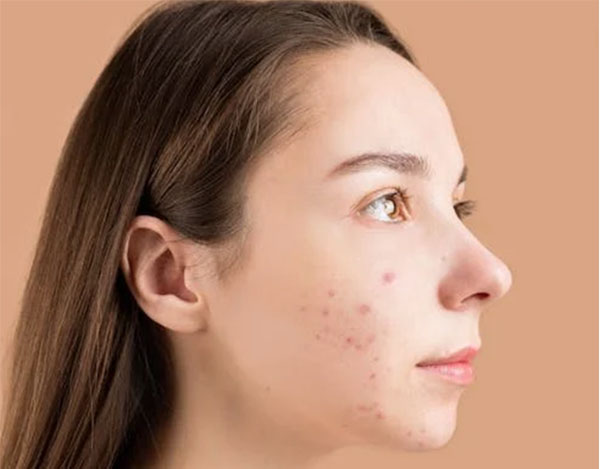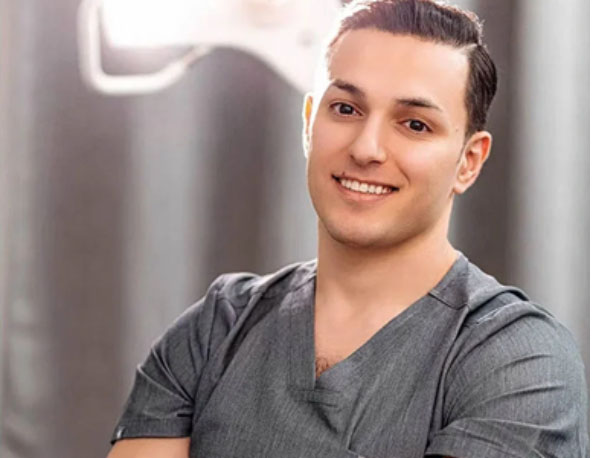Skin Health: Enhance Your Appearance with Effective Acne Scar Treatments Expert Insights From Dr. Ammar Mahmoud
By Space Coast Daily // February 25, 2025

Acne scars can be challenging to deal with following a cystic or inflammatory breakout, as deep blemishes can damage the skin’s collagen structure.
Approximately 80% of individuals aged 11 to 30 experience acne, and about one in five will develop acne scars that linger for years without proper treatment, often leading to long-term textural irregularities and post-inflammatory hyperpigmentation that require targeted acne scar treatment.
Space Coast Daily will share valuable insight into the science behind acne scars and expert-backed solutions for treating them straight from Dr. Ammar Mahmoud.
Acne Scarring: Understanding the Causes and Long-Term Effects
To ensure effective acne scar reduction, it’s crucial to understand why they form and how they potentially affect your skin over time.
Acne scars typically form when deep inflammation damages the skin’s collagen and healing processes don’t fully restore the affected area. This can result in different types of acne scarring; here’s a short and helpful guide on each acne scar type:
| Type of Acne Scar | What It Looks Like | What Causes It to Form |
| Ice Pick Scars | Deep, narrow, and pitted scars resembling small holes in the skin. | Severe acne that damages deep layers of the skin, leading to collagen loss. |
| Boxcar Scars | Scars that are broad and shallow with well-defined borders, typically forming as circular or oval indentations.
|
Inflammation destroys collagen, preventing smooth healing and leaving depressions. |
| Rolling Scars | Uneven, wavy depressions that create a bumpy skin texture. | Fibrous bands form between the skin and underlying tissue, pulling the skin downward. |
| Hypertrophic Scars | Raised, thick scars that remain within the original acne lesion area. | Excess collagen production during the healing process, causing thickened tissue. |
| Keloid Scars | Larger, raised scars that extend beyond the original acne lesion, often red or dark in color. | An overproduction of collagen in response to inflammation, leading to scar tissue beyond the original wound. |
Each of these acne scar types requires a customized treatment plan crafted by skin specialists, as no single solution works for all scars. The best approach depends on the scar’s depth, texture, and individual skin type.
Expert Insights: Dr. Ammar Mahmoud on Acne Scar Treatments
Dr. Ammar Mahmoud is a highly skilled cosmetic surgeon in New York, known for his expertise in advanced acne scar treatments that target deep scarring and skin irregularities. He believes that there is no “one-size-fits-all” treatment for acne scars and takes a customized approach, carefully selecting the best solution for each patient’s skin type and scar severity.
This section provides Dr. Mahmoud’s professional insight on the best professional treatments for each type, from the hardest to the easiest to treat, and how to get rid of acne scars naturally, helping you find the right solution for smoother, healthier skin.
1. Ice Pick Scars
Ice pick scars are one of the most challenging types to treat as their sharp, deep indentations penetrate the skin’s layers, making traditional resurfacing techniques less effective.
Home remedies are not enough to stimulate the deep collagen production necessary to smooth out these scars, which is why professional treatments are highly recommended. The most effective treatments for ice pick scars include:
- TCA Cross: A chemical reconstruction technique using high-strength trichloroacetic acid to resurface deep scars by promoting new collagen formation.
- Laser Resurfacing: CO2 or Erbium lasers vaporize the damaged outer layers of skin, triggering regeneration and improving scar texture.
- Microneedling with RF: A combination of microneedling and radiofrequency energy that penetrates deep into the skin to stimulate collagen and tighten the skin.
- Punch Excision: A minor surgical procedure that removes the scar completely, replacing it with a small, less noticeable mark or sutured closure.
2. Keloid Scars
While keloid scars caused by acne are rare, they can still develop in individuals prone to excessive collagen production.
This type of acne scar can be challenging to treat due to its tendency to continue growing even after healing, requiring targeted interventions such as corticosteroid injections or laser therapy to manage its appearance. Some effective professional and at-home treatments for keloid acne scars are:
- Intralesional Corticosteroid Injections: Reduce inflammation, inhibit collagen overproduction, and gradually shrink the keloid.
- Silicone-Based Therapy (Gels, Sheets, or Dressings): Hydrates and softens the scar, improving elasticity and flattening raised tissue.
- Cryotherapy: Destroys keloid tissue through controlled freezing, often used in combination with corticosteroids.
- Pulsed-Dye Laser (PDL) or Fractional Laser Therapy: Helps reduce redness, improves skin texture, and minimizes the scar’s appearance.
- Pressure Therapy: Uses compression devices to prevent excessive collagen buildup and restrict scar expansion.
- Surgical Excision (Last Resort): Involves surgically removing the keloid but must be followed by adjunctive treatments (e.g., steroid injections, radiation therapy) to prevent regrowth.
3. Hypertrophic Scars
Hypertrophic scars are similar to keloids but are easier to treat. This type of acne scar forms as thick, raised tissue over the original wound but does not expand beyond it. Unlike keloids, hypertrophic scars may fade over time and respond well to treatments. Effective professional acne treatments and home remedies for hypertrophic scars include:
- Intralesional Corticosteroid Injections: Suppress collagen overproduction and flatten the scar.
- Fractional CO2 Laser Therapy: Breaks down excess scar tissue and improves overall skin texture.
- Silicone-Based Treatments (Gels or Sheets): Reduce scar thickness and improve flexibility.
- Vitamin E and Essential Oils: Hydrate and nourish the skin to aid in scar healing.
- Onion Extract Creams: May help inhibit excessive collagen production.
- Microneedling with RF Energy: Enhances collagen remodeling for a smoother skin surface.
4. Boxcar Scars
Due to their wider and shallower indentations, boxcar scars often respond well to resurfacing treatments. These scars form when inflammation destroys collagen, leaving distinct edges and a depressed area that can be softened and filled over time with the right treatments.
If you’re looking to reduce the visibility of boxcar scars, these professional treatments and at-home solutions may help:
- Fractional CO2 or Erbium Laser Therapy: Enhances collagen production and resurfaces the skin.
- Microneedling with RF or PRP: Improves skin texture by stimulating deep tissue remodeling.
- Prescription Retinoids (Tretinoin, Adapalene): Accelerates skin renewal.
- AHAs & BHAs (Glycolic, Lactic, Salicylic Acid): Chemically exfoliates to improve skin texture.
- Silicone Scar Gels & Sheets: Helps reduce thickness and discoloration.
- TCA or Jessner’s Chemical Peels: Promotes cell turnover and reduces scar depth.
- Subcision Therapy: Releases fibrotic tissue that pulls scars inward.
- Dermal Fillers (Hyaluronic Acid, Bellafill): Temporarily lifts scars to smooth skin texture.
5. Rolling Scars
Rolling scars typically respond well to treatments that target both the surface texture and the deeper fibrotic tissue, causing skin indentations. This type of acne scar is one of the least challenging to treat due to its shallow depth and lack of sharply defined edges.
To effectively treat rolling scars, a combination of professional procedures and targeted at-home skincare can help refine skin texture and promote collagen production:
- Subcision Therapy: A minor surgical procedure that releases tethered scar bands to allow natural skin elevation.
- Prescription Retinoids (Tretinoin, Adapalene): Enhances collagen formation and promotes epidermal renewal.
- Microneedling with RF Energy: Creates controlled skin injury to trigger collagen remodeling.
- Fractional Laser Therapy (CO2 or Erbium): Stimulates collagen regeneration for long-term improvement.
- Medium to Deep Chemical Peels (TCA, Jessner’s, Phenol Peels): Accelerates skin turnover and refines texture.
- Exfoliating Acids (AHAs, BHAs): Chemical exfoliation to encourage smoother skin.
- Silicone-Based Scar Treatments: Reduces the thickness and stiffness of scar tissue.
- Injectable Fillers (Hyaluronic Acid or Bellafill): Temporarily raises atrophic scars to match the surrounding skin.
Transform Your Skin with Expert Acne Scar Treatments
Choose your trusted medical spa that will provide comprehensive acne scar removal services designed to address different types of scarring, from deep atrophic depressions to raised hypertrophic scars.
Look for board-certified specialists who are highly experienced in advanced scar revision techniques, such as Fraxel laser therapy, microneedling, subcision surgery, dermal fillers, and chemical peels—all designed to smooth skin texture and stimulate collagen production for lasting improvements.
Looking for more expert insights on skincare innovations, health trends, and aesthetic treatments? Visit Space Coast Daily for the latest updates on beauty, wellness, and dermatological advancements.

| Special Thanks To Dr. Ammar for sharing his insights! | |
Headshot File URL here: https://www.alineamedicalspa.com/wp-content/uploads/2024/11/dr.-ammar-mahmoud-2.jpg |
Dr. Ammar Mahmoud, a top cosmetic gynecological surgeon in NYC, offers expertise in labiaplasty, vaginal rejuvenation, PRP therapy, and skin revitalization. At Alinea Medical Spa, he focuses on delivering personalized treatments that prioritize patient comfort and lasting results. With a background in biomedical engineering and past experience as a clinical associate professor at SUNY Downstate, Dr. Mahmoud combines innovation with a patient-centered approach. His commitment to advancing cosmetic techniques has earned him recognition as a trusted specialist in both aesthetic and women’s health solutions. |











